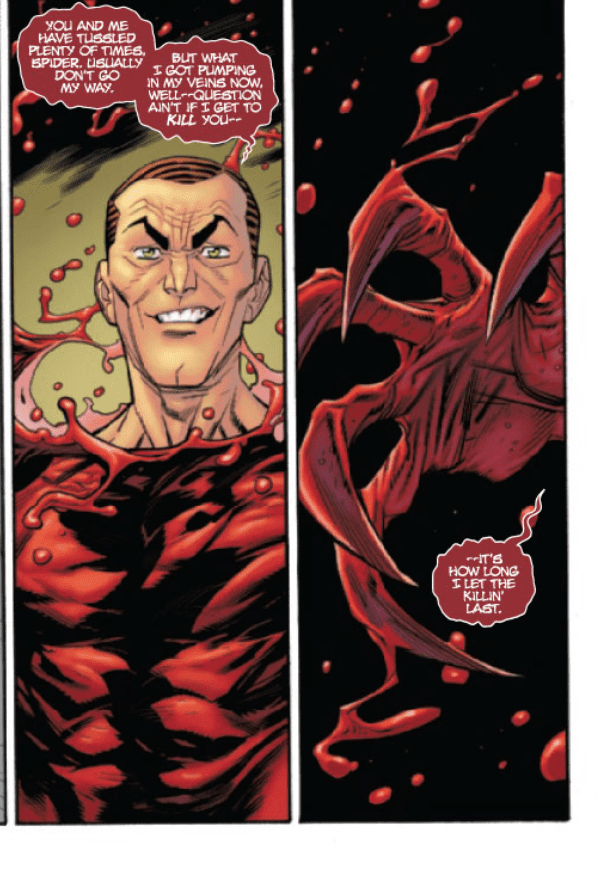In Marvel Comics’ Amazing Spider-Man #31, on sale October 9, writer Nick Spencer explores the historical rivalry between Spidey and Norman Osborn. By digging into their past and comparing it to the present, Spencer shows the circuitous pattern of the feud, which makes Spidey’s eventual ability to break from the loop even more satisfying.
Writer: Nick Spencer
Penciler: Ryan Ottley
Inker: Cliff Rathburn
Colorist: Nathan Fairbairn
Letterer: VC’s Joe Caramagna
Sometimes, it’s easy to forget that Norman Osborn is the Joker to Spider-Man’s Batman; their bitter rivalry spans decades and no other villain in Spidey’s rogues’ gallery can match the personal hatred in this conflict. Before Absolute Carnage, Norman had faded into the background since “Go Down Swinging,” which set the stage for the event currently threatening the Marvel Universe. Now, Norman is back at center stage and he’s determined to do what he does best ―make Spider-Man’s life a living hell.

With the Carnage symbiote, Norman is stronger and crazier than ever. That’s why, last time we saw Spidey in the previous issue, Norman was standing over the bloodied and battered hero. As Peter’s narration (along with the usage of flashbacks) show, this scene is a familiar one in Spider-Man’s world. Peter is the last line of defense that’s keeping Norman from his next targets, Normie Osborn and Dylan Brock. At first, Norman’s just too powerful and Peter thinks that he’s once again unable stop his nemesis. Spencer juxtaposes the present action with cuts to Peter’s past, when failing to defeat Norman has caused him unfathomable tragedy.

Norman has taken everything from Spidey; he killed Gwen Stacy and he’s been tormenting Peter’s loved ones (like Mary Jane and Harry Osborn) for a long time. Spider-Man reflects on this pain while he lies on the ground and helplessly watches Norman prepare to attack Dylan and Normie. In the span of one issue, Spencer guides the reader through an exploration of Spider-Man’s self-doubt; through his narration, the hero conveys his belief in the inevitability of Norman’s heinous actions. But the threat of losing the two kids drives Spider-Man to keep fighting. The entire issue feels like a compelling example of the classic proverb, “Fall seven times, stand up eight.” No matter how often Spidey gets knocked down, he’ll always get back up. That’s the heart of the character and Spencer’s ability to portray it continues to be the series’ clearest strength.
Throughout the issue, the art team shows the distinct shifts in Norman’s personality. In the first flashback, when Peter tries to visit Harry during his struggle with substance abuse, he’s the aggressive, overbearing father who’s trying to protect his son. Penciler Ryan Ottley makes Norman look like he’s gone mad in response to his concern about Harry. Colorist Nathan Fairbairn adds shades of red to Norman’s eyes, a fitting nod to his future bond with Carnage that further displays his wrath. The fury on Norman’s face is tangible and it’s clear he doesn’t need a Carnage symbiote or a Green Goblin suit to be terrifying. Of course, when he does wear the symbiote later in the issue, he’s even more scary because of the deranged grin on his face.

In Amazing Spider-Man #31, Spidey overcomes his fears and hands Norman/Carnage his most significant defeat since the beginning of Marvel’s latest crossover event. The analysis of Peter’s emotions stands as a highlight of the issue and put Spidey back on top after he briefly hit rock bottom.
What’d you think of Amazing Spider-Man #31? Where do you hope to see the series go from here?

